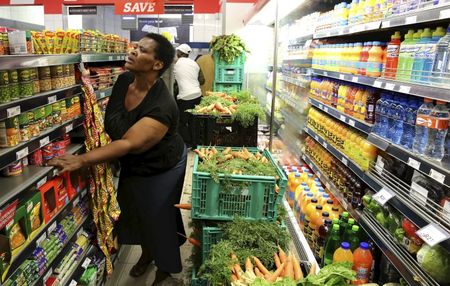Have we reached a turning point for EM?
2024.09.23 05:02

Investing.com — Emerging markets have often been seen as highly vulnerable to external shocks and global economic cycles, but as we look ahead, a more nuanced picture is emerging.
Recent developments in global monetary policy, particularly from the US Federal Reserve, combined with evolving domestic conditions across various EMs, suggest that these economies may be at a critical juncture.
As per analysts at Citi Research, while a turning point is possible, it will depend heavily on how these forces play out in the coming months.
The expected shift in US Federal Reserve policy is expected to play a major role in EMs’ economic outlook.
“Fed easing should be helpful for more net inflows into EM, though conditional on external factors such as US hard landing risks and elections,” the analysts said.
As US rates begin to decline, the relative attractiveness of higher-yielding EM assets may draw in more foreign investors. This shift could be especially beneficial for countries like South Africa, Indonesia, and India, which enjoy a widening interest rate differential compared to US assets.
However, this positive outcome is not guaranteed. Much depends on external conditions, such as the trajectory of the US economy and its ability to achieve a “soft” landing.
A critical factor differentiating EMs today from previous cycles is the divergence in monetary policy approaches between the US and EM central banks.
While the Fed is poised to cut rates, most EM central banks are expected to take a more measured approach. In fact, many EM central banks are likely to cut rates less aggressively, or not at all, given that inflation in several of these economies is already closer to target levels.
South Africa, Hungary, India, Philippines, Indonesia and Brazil stand out in this regard, with well-anchored inflation and high ex-ante real rates that provide an additional buffer against global economic fluctuations.
Beyond monetary policy, growth prospects across EMs remain varied but promising in many cases. South Africa and Egypt are two economies that Citi Research highlights as having particularly favorable growth and inflation dynamics.
South Africa, in particular, is benefiting from post-election confidence and supply-side reforms aimed at stabilizing power outages and improving infrastructure.
Egypt, meanwhile, is seeing large-scale investments from the Middle East and continues to follow an IMF-backed stabilization program, which should support further disinflation and economic reform.
India’s growth story is also compelling. Investment-driven growth has accelerated, largely led by public infrastructure spending, which has improved logistics and transportation networks.
“India looks well-positioned to capitalize on the opportunities presented by the geopolitical realignments in trade and investment flows, providing an alternative “China+1” destination with the fastest growing large economy in the world,” the analysts said.
Private sector investment is picking up as corporate balance sheets improve, and with fiscal consolidation efforts progressing faster than anticipated, India’s macroeconomic stability remains strong.
China’s economy, which has long been a pillar of EM growth, faces significant structural challenges. The ongoing unwinding of excesses in the real estate sector continues to weigh on household confidence, given that a large portion of household wealth is tied to property.
At the same time, geopolitical tensions with the West are increasing, adding a risk premium to Chinese assets and stalling foreign investment. Citi Research also flags China’s chronic under-delivery of policy responses to stimulate domestic demand, which has left deflationary pressures unaddressed. This is likely to reinforce a drag on overall growth.
In addition to China, other EMs face their own set of structural challenges. Turkey, for example, has been grappling with persistently high inflation and a complex political environment, while Mexico faces uncertainty following the recent constitutional reforms that could weaken its institutional framework.
Although Mexico has the potential to benefit from nearshoring, these political risks could delay or diminish those benefits. Brazil, meanwhile, is seeing signs of fiscal instability, which has led to a sharp depreciation in its currency, though recent improvements in economic growth and potential interest rate hikes could help stabilize the situation.
Commodity-exporting EMs also face volatility due to fluctuating global commodity prices. While weaker commodity prices have put pressure on some economies, many of these exporters are still benefiting from historically high real interest rates, which provide a buffer against global economic headwinds.
Additionally, despite lower commodity prices, economic momentum in commodity-exporting nations has remained surprisingly resilient, suggesting that the relationship between these economies and commodity prices may have de-linked, at least temporarily.
Amid these varied conditions, fiscal risks remain a concern, particularly for countries like Brazil and Colombia, where market sentiment is highly sensitive to fiscal policy.
While many EMs have managed to stabilize their external balances, thanks in part to prudent macroeconomic policies, some countries are still grappling with high levels of debt and elevated risk premiums.
In this context, fiscal consolidation efforts in countries like South Africa have been a positive development, helping to lower risk premiums.








